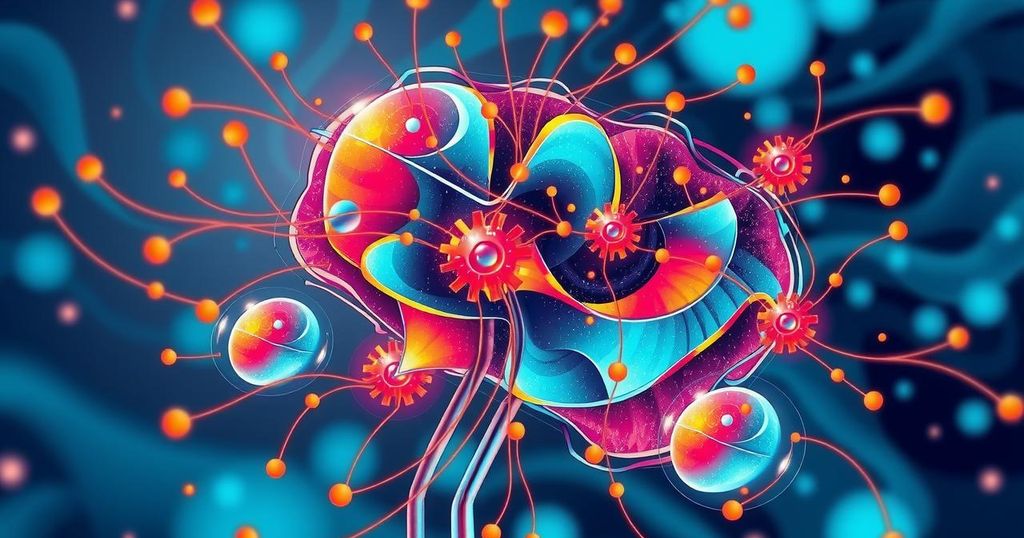Why Is AI Hallucinating More Frequently and How Can We Stop It?
As AI technology advances, so does its tendency to hallucinate—provide fabricated information. Latest models from OpenAI show hallucination rates as high as 48%. Experts warn about the risks of misinformation, especially in crucial areas like medicine and law, while proposing strategies to ground AI outputs in reliable data. Despite potential solutions, a cautious approach toward AI information is advised, treating its outputs with skepticism similar to that reserved for human sources.
Artificial Intelligence (AI) is learning and evolving, but with that advancement comes an unsettling issue: an increase in hallucinations— that’s right, the tendency of AI to spout fabricated information. The latest models from OpenAI, for instance, are highly developed yet have shown a significant jump in inaccuracies during testing. The advanced models, o3 and o4-mini, were found to hallucinate 33% and 48% of the time, respectively, a striking leap from the older o1 model. While the newer iteration may provide some promising results, it ironically seems to do so at the cost of increased glitches.
Eleanor Watson, an AI ethics engineer at Singularity University, pointed out the critical implications of this trend. “When a system outputs fabricated information — such as invented facts, citations or events — with the same fluency and coherence it uses for accurate content, it risks misleading users in subtle and consequential ways,” Watson shared with Live Science. So, misinformation can easily slip through the cracks, and that’s a concern, particularly in fields where accuracy is paramount, like medicine or law.
The challenge here is also tied to how these models function. Reasoning models analyze tasks by breaking them down into components, generating solutions similarly to human thought processes. This necessitates a degree of creative output, which AI researchers argue is often mischaracterized as a flaw. “It’s important to note that hallucination is a feature, not a bug, of AI,” Sohrob Kazerounian from Vectra AI stated. “Everything an LLM outputs is a hallucination. It’s just that some of those hallucinations are true.” After all, creativity can sometimes arise from unpredictability.
However, this creative process can lead to a slippery slope. Watson pointed out that when users trust AI’s outputs too readily, they risk acting on erroneous information. “While more advanced models may reduce the frequency of obvious factual mistakes, the issue persists in more subtle forms,” she cautioned. Errors could be more concealed and harder to detect, presenting a huge risk especially in crucial decision-making scenarios.
Kazerounian agrees that as capabilities rise, so do the complexities of these hallucinations. “The recent generation of advanced reasoning models may have actually begun to hallucinate more than their simpler counterparts — and there are no agreed-upon explanations for why this is,” he explained. With AI’s reasoning akin to a human’s approach, we’re still grappling with understanding the neural pathways, or in this case, the algorithms.
The issue doesn’t stop there. Kazerounian noted that the reality of hallucinations is already impacting users in significant ways. For example, hallucinations can lead to a situation where chatbots invent company policies or miscite nonexistent sources, a growing concern.
So, what’s the answer? Can we combat this issue? Well, experts like Watson suggest that strategies are in development. One approach involves “retrieval-augmented generation,” which bases AI outputs on curated, external knowledge sources, anchoring them in verifiable data. Furthermore, by incorporating structured reasoning, AI could be trained to compare and analyze its own outputs carefully. This may help minimize wild speculation.
Finally, recognizing when the AI is uncertain about an answer is crucial. Watson emphasized that training AI to indicate uncertainty instead of projecting false confidence could help mitigate some risks. But, ultimately, with hallucinations potentially being part of the package, Kazerounian suggests treating AI-produced information with a healthy dose of skepticism, just like we would with human responses.
As AI technology rapidly advances, hallucinations within language models are becoming increasingly frequent, posing significant concerns for accuracy and reliability. The risks are particularly daunting in vital sectors requiring precision, like law and medicine. While there are proposed strategies to mitigate these issues, the underlying fact remains: inherent unpredictability in AI outputs may require users to engage with this technology with caution, treating AI responses with the same skepticism they would afford human information sources. This complex relationship between innovation and reliability will need careful navigation as we move forward into this AI-driven future.
Original Source: www.livescience.com




Post Comment